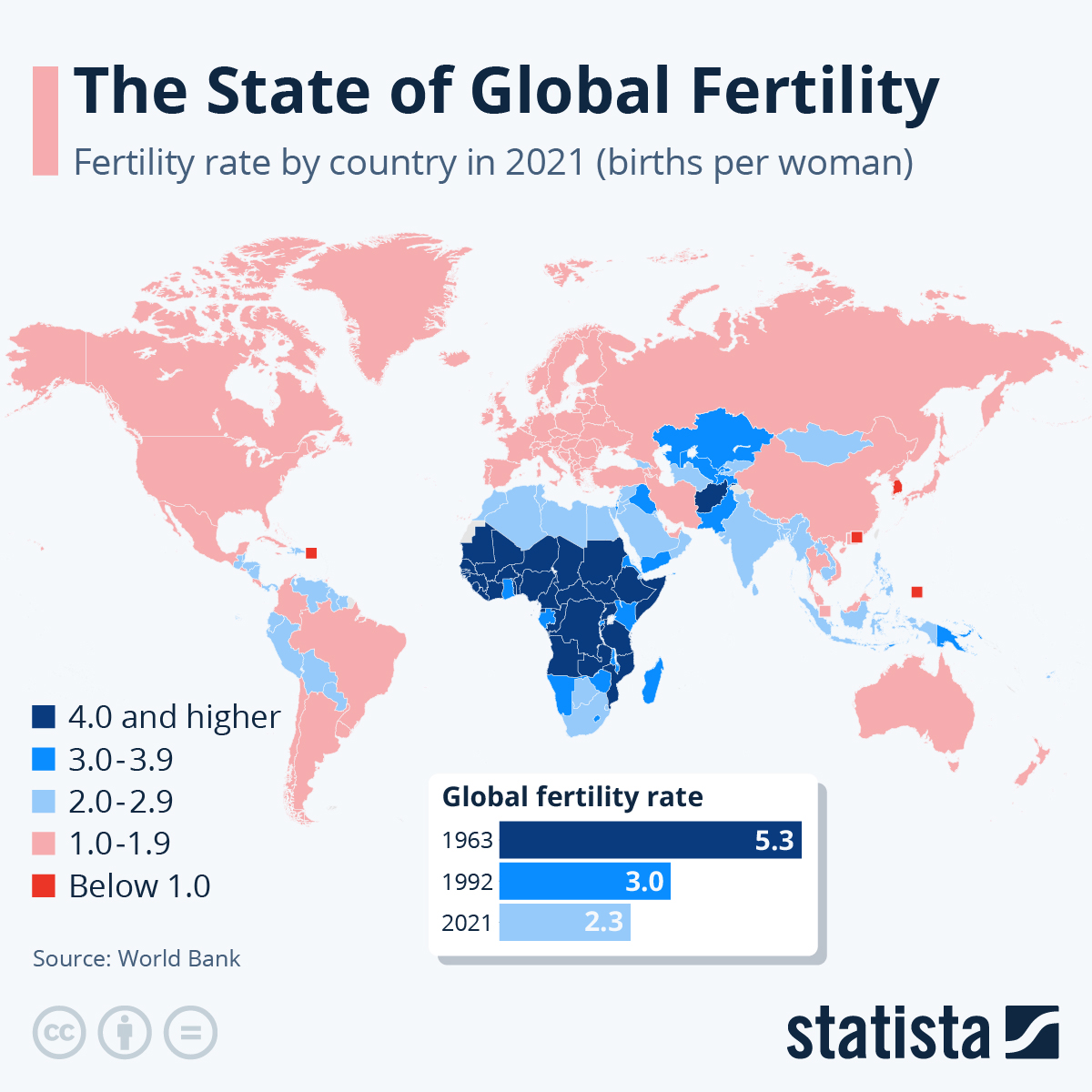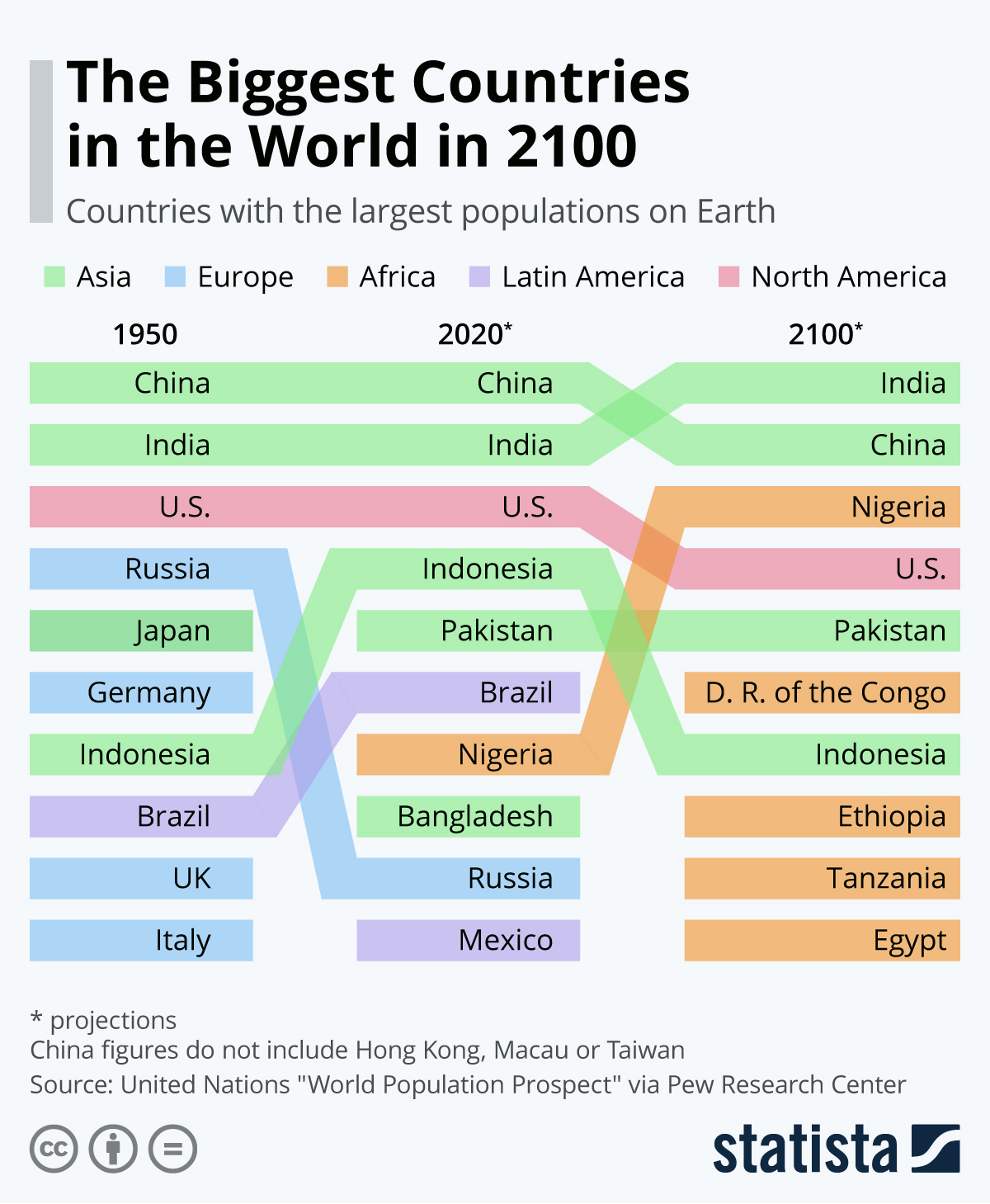INFO Global Fertility and Africa
On average, women in 1963 were having 5.3 children in their lifetime and by 2021, that had more than halved to 2.3. During the same period, the global population rose by around 150 percent from 3.2 billion to 7.9 billion. The fact that populations kept (and keep) growing despite falling global fertility is tied to longer life expectancy and lower childhood mortality. The UN expects global fertility to reach the minimum replacement level of 2.1 by the middle of the century while global population is expected to start falling towards the end of it.
 You will find more infographics at Statista
You will find more infographics at StatistaWhile in 2020, five out of the ten most populous countries in the world were located in Asia, the picture will look different in 2100, when five African countries – Nigeria, Ethiopia, Tanzania, Egypt and the Democratic Republic of the Congo – will be among the world’s ten largest.
 You will find more infographics at Statista
You will find more infographics at Statista